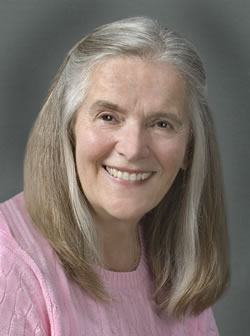
No Comments on International Donations: Public Relations and Philanthropy 293
Pamela Rose, MLS
University at Buffalo
Health Sciences Library
“Give what you have. To someone, it may be better than you dare to think.”
Henry Wadsworth Longfellow (1807–1882)
Every U.S. library likely has patrons who approach them in the hope that they will accept a donation of books and/or journals. Perhaps a relative has passed away, or a faculty member has retired. Whatever the reason, the answer in this increasingly electronic age is often “no.” Unless the materials are rare or unique and fit into a historical or other special collection, most libraries do not have the resources or space to catalog, shelve, and care for extra copies that may already be in their collections. While some offerings of donated titles might be unique to a library’s holdings, the increasing demand for e-books and e-journals is a more attractive access option.
As service organizations, finding a way to say “yes” or offering an alternative to patrons asking to donate materials is preferable to saying “no.” Many libraries are also sensitive to and involved in recycling efforts, as well as volunteer initiatives in the community. The International Donation Program, housed on the web site of the Health Sciences Library at the University at Buffalo, functions as a tool to help libraries maintain good public relations while also serving the greater good both locally and abroad.
Founded in 1998 with just 22 entries, the International Donations Program has grown to over 120 listings of institutions, organizations, and programs worldwide that are desperate for print materials. They range from large international efforts like the broad-based, long-standing Book Aid International project to the Rehmania Public Library, a tiny initiative begun by a few dedicated local residents in a remote area of Pakistan. Of particular interest is the international section, which includes 17 large programs that collect materials in many subject areas and redistribute them all over the world. Each individual listing includes contact information, a brief description of the mission, and the subjects, languages, and levels of materials needed.
The list is currently indexed by broad geographic areas for those who may have an interest in donating to a particular ethnic area. Users are advised to contact their chosen program first to be sure the need matches their donation, and to get specific shipping instructions. When programs ask for a listing on the page, I suggest that having a U.S. shipping address will make it easier for U.S. donors – less expensive shipping costs and no need for customs forms.
Although electronic access is rapidly spreading even to remote locations, the demand for print materials remains. Remote villages might have cell phone access, but their ability to read e-books and e-journals is still limited to enrollment in programs like Hinari which gives low- and middle- income countries access to the biomedical and health literature. There are fewer such options for general K-12, fiction, and subject areas outside of the health sciences.
Shortly after the debut of the International Donations Program web page, requests began to pour in from all over the world, including the U.S., reflecting the need for such a resource. Although the first listings were primarily programs in the health sciences, the entries quickly expanded to encompass all subject areas. By 2000, it became necessary to set formal criteria for inclusion to exclude requests from individuals – only nonprofit, educational, NGO, and charitable endeavors are now accepted. Entries are researched and verified before listing, and requestors may be asked to provide a letter from an authority to validate the program.
As of February 2014, requests to be added to the page continue to come in every month. Over the years, feedback from both users and recipients has been overwhelmingly positive. Librarians regularly refer patrons to the page, and donees report receiving shipments of materials. The page will continue to be maintained as long as need dictates, and, hopefully, it will be converted into a more user-friendly, database-driven format.
FOOTNOTE: Readers interested in more detail can read the 2003 article, “Development of a Universal Book and Journal Donation Resource” in Library Collections, Acquisitions, & Technical Services 27 (2003) 305-316 – for those with access: http://dx.doi.org/10.1016/S1464-9055(03)00074-5


Leave a comment